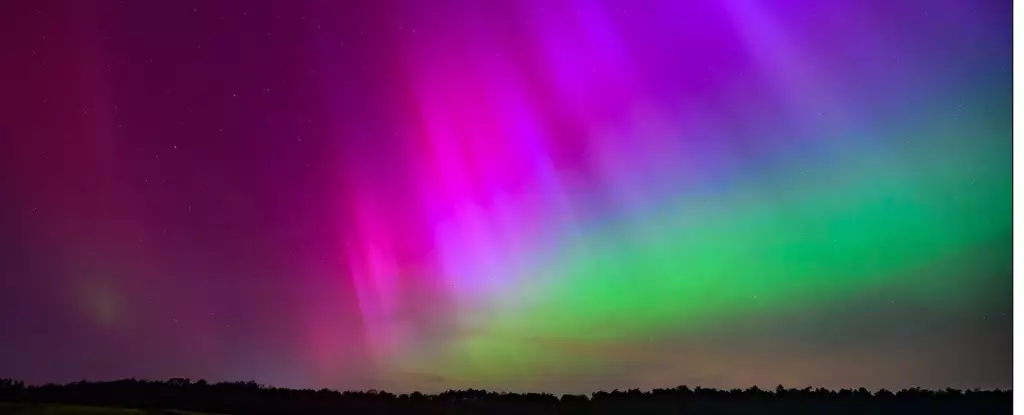A recent solar flare sent an energetic wave of particles towards Earth, resulting in a spectacular display of auroras that could be seen in both hemispheres. This surge in auroral activity was a rare treat for sky gazers worldwide, with sightings as far south as Hawaii and as far north as Mackay. With the Sun nearing the peak of its 11-year sunspot cycle, we can expect more intense auroras to grace our skies in the coming year.
Auroras are caused by charged subatomic particles, primarily electrons, colliding with Earth’s atmosphere. These particles, emitted by the Sun, interact with oxygen molecules in the upper atmosphere, splitting them into individual atoms. When these atoms are in an excited state, they release energy in the form of light. Different elements produce varying colors of light when energized, such as blue from copper atoms, green from barium, and yellow-orange from sodium atoms.
The dominant green light in auroras is emitted by oxygen atoms transitioning from one state to another. This process, known as a “forbidden” transition, is a relatively slow one compared to other emissions, taking almost a second on average. While this transition may not happen at ground level due to the high air pressure, the upper atmosphere provides a suitable environment for these oxygen atoms to release a photon, resulting in the mesmerizing green glow of auroras.
After emitting the green photon, the oxygen atom transitions to another excited state with no allowed relaxation. This leads to another forbidden transition, emitting a red light. This transition is even more improbable, requiring the oxygen atom to remain in the state for about two minutes before releasing the red light. As collisions with other atoms are scarce at high altitudes, the red light tends to appear only in intense auroras, standing out above the green glow.
Apart from green and red, auroras can also display blue and magenta hues from ionized nitrogen molecules. These colors, visible to the naked eye during bright auroras, appear even more vivid through cameras. Cameras benefit from longer exposure times and are not limited by the human eye’s inability to distinguish colors in low light. When the aurora is sufficiently bright, the intricate colors reveal themselves not only through lenses but also directly to observers.
The captivating dance of colors in auroras is a result of various transitions and interactions at play in Earth’s upper atmosphere. While the science behind these celestial phenomena may be complex, the visual spectacle they offer is a reminder of the beauty and dynamic nature of our planet’s interactions with the cosmos.



Leave a Reply